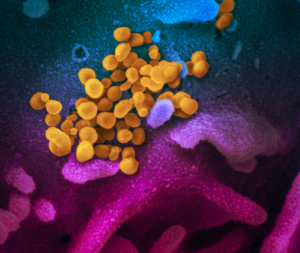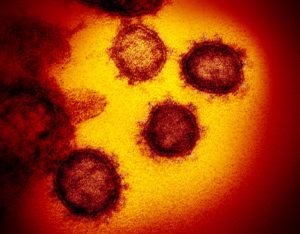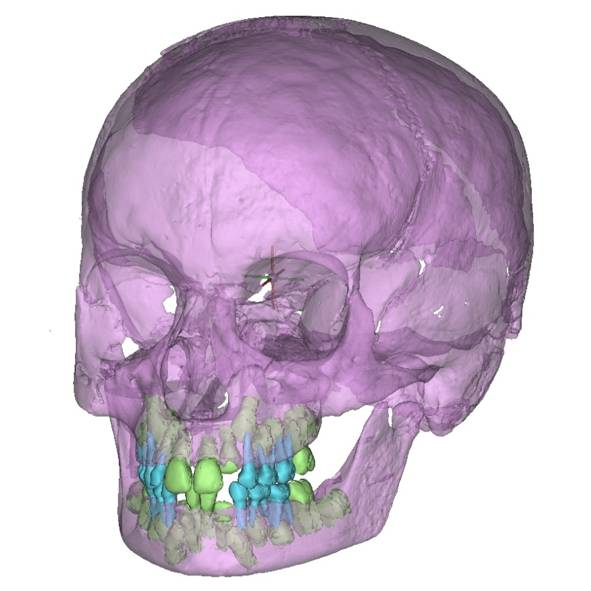Update: 27.03.2020
On the 11th of March, the WHO (World Health Organization) declared the novel strain of coronavirus a pandemic.There is still a huge amount of misinformation and rumors circulating the outbreak of the virus, particularly on social media, so I decided to revisit the subject and share my findings with you. Also, as I work as front-line staff at a hospital in Scotland, I have now started encountering patients with COVID-19, although at the time of writing, we are only at the very bottom of the disease curve in the UK rising towards the peak.
These are some of the questions puzzling me, I hope they answer some of yours too!
Does the virus now have an official name? On the 11th of February the virus and the disease it causes was officially named. The virus was named severe acute respiratory syndrome coronavirus 2 (SARS-CoV-2) and the disease it causes COVID-19, so is no longer referred to as 2019-nCoV or Corona. The virus was named so, because Co and Vi come from coronavirus, “d” meaning disease and 19 standing for 2019, the year the first cases were seen, hence COVID-19.
What actually is a virus? Unlike bacteria, a virus cannot reproduce itself on its own. A virus needs a host to reproduce itself – for this reason they are sometimes called the living dead… The SARS-CoV-2 virus is a single cell organism with a single RNA (ribonucleic acid) strand, unlike the double helix DNA (deoxyribonucleic acid) we know from humans. Antibiotics only kill bacterial infections and have no effect on viruses.
Is there a cure or a vaccine? There is no cure, no vaccine and no treatment yet, apart from management of symptoms.
Has it now spread to the entire world? It has by today spread to every continent of the world with the exception of the Antarctic. So far, it has not reached the temporarily scientific research population living there, seasonally ranging between 1000 to 5000 people in international stations.
Which animal did it originate from? We still do not know precisely from which animal the SARS-CoV-2 virus originated. Sources agree that the most likely animal vector was a species of bats.
How does it spread? We still do not know exactly how the virus spreads from person to person, but based on similar viruses, it mainly spreads in respiratory droplets (coughing, accidentally spitting while talking or sneezing) and secondly, to lesser effect, from touching infected areas such as door handles or surfaces, then touching your face and thereby getting infected.
Do we know how easily it spreads? Well, the R0 value, the reproductive number, meaning how contagious the virus is (when it spreads to other people it reproduces itself) is still not exactly clarified. If an R0 is less than 1, the spread will decline and die out, if R0 equals 1, it will stay stable and when R0 is larger than 1, there will be an outbreak with the potential to reach a pandemic. The R0 value is calculated from the period people are infectious, the contact rate and mode of transmission. As the virus is still new there is uncertainty with these factors and hence how the R0 value should be calculated. Current estimations of the R0 value range from 1.4 to 6.49, with a mean of 3.28. In comparison, the common flu has an R0 of about 1.3 and the most severe pandemic of the seasonal flu in the winter of 2009/2010 had an estimated average R0 value of 1.46. So COVID-19 is considered more contagious than the common flu.
When is there highest risk of spreading COVID-19? People are considered most contagious while they are most symptomatic (peak sickness) but can also spread the virus before they start showing symptoms, although this is not considered the main route for spreading. Time from infection to symptoms (incubation period) is for 97.5% of people within 11.5 days of contracting the virus with a median of 5.1 days.
How deadly is it? The mortality rate of the COVID-19 pandemic is even more difficult to calculate, as there are many factors involved, most notable the lack of testing and hence an unknown number of actual cases. Access and quality to healthcare is another factor. If you live in an area with no oxygen masks or ventilators, more people are likely to die of COVID-19. More so, the mortality rate can be calculated in different ways: 1) number of dead out of number of infected or 2) number of dead out of number of infected 14 days ago (taking into account a maximum incubation time) or 3) number of dead in relation to number of recovered individuals, hence only cases with an outcome (death or recovery). Hence, while the true death rate of COVID-19 will take some time to fully understand, the numbers from China, who is on the way to recovery (from the first wave), seem to indicate a mortality of about 3%. This may be lower due to the actual number of infected people being higher but undetected.
Is it mutating? Yes, SARS-CoV-2 has mutated into two strains called the L-strain and the S-strain. The S-strain is considered to be the original version, predominantly found in China. The S-strain then mutated to the L-strain, which is seen in about 70% of cases. Because the L-strain is more widespread than the original S-strain it has been suggested to be more “aggressive”. However, it is too early to state this – it may be that it became more prevalent for reasons such as human travel patterns and thus a more rapid spread.
What does the SARS-CoV-2 virus actually look like? The National Institute of Allergy and Infectious Diseases’ (NIAID) Rocky Mountains Laboratories (RML) have released some images of covid-19 as seen under a microscope.

Figure 1: Seen here is a scanning electron microscope image in false colour, where the SARS-CoV-2 virus on the surface of a cell coloured blue and pink.

Figure 2: Seen here is a transmission electron microscope image where the spikes on the surface of the virus can be seen giving the name ‘corona’ meaning crown.
As the WHO and government continue to monitor and research, we will learn more about the COVID-19 disease over the next few months and I will endeavor to keep you posted.
References for images: Figure 1 and 2: The National Institute of Allergy and Infectious Diseases’ (NIAID) Rocky Mountains Laboratories (RML).
